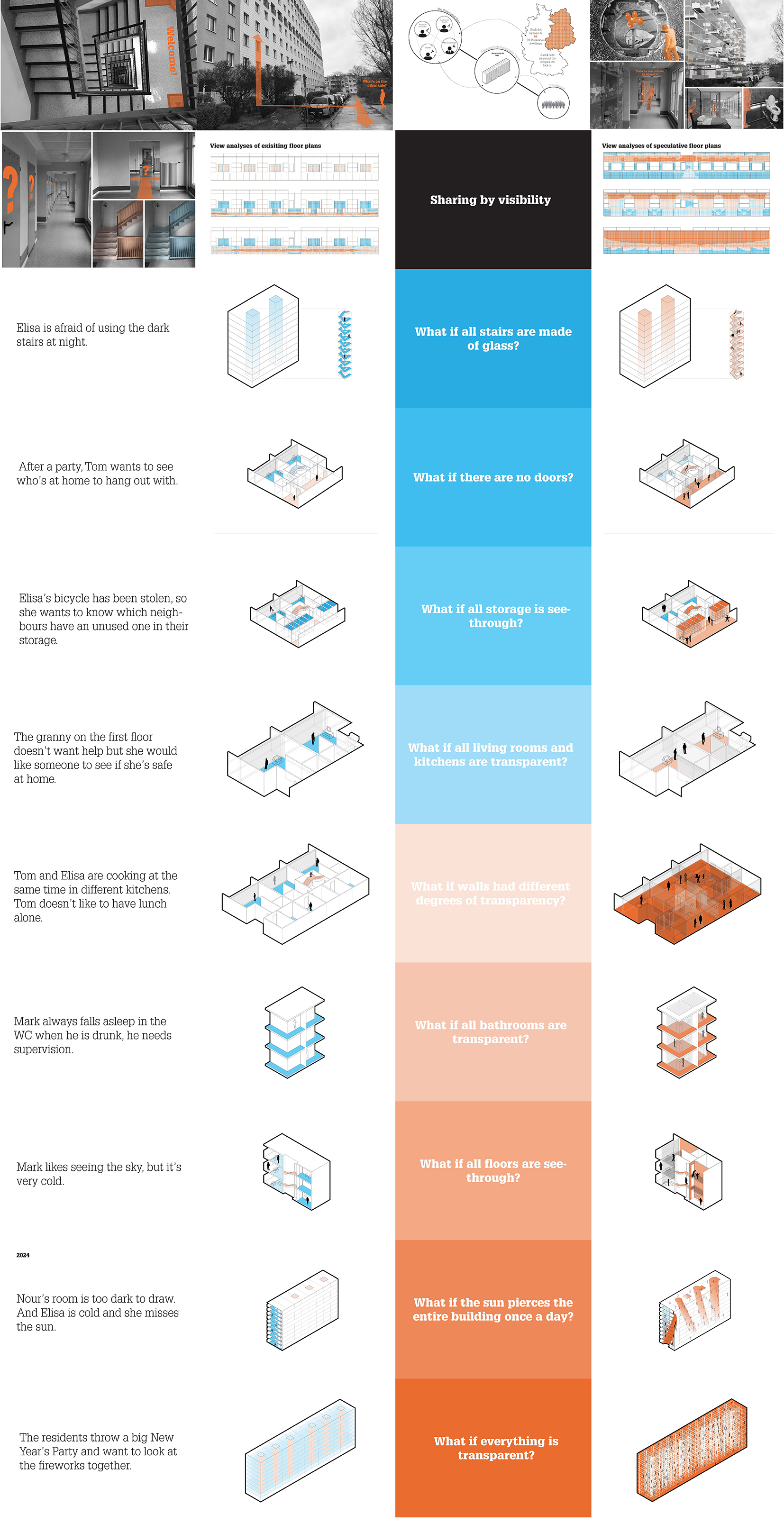Weshare Berlin, from House to Housing
TUD Actualities workshop ANCB Berlin
TUD Actualities workshop ANCB Berlin. Within the workshop WeShare Berlin thirty students of The Why Factory collect and compare various ways in which habitable space in the city is being shared.
Within the workshop weShare Berlin thirty students of The Why Factory collect and compare various ways in which habitable space in the city is being shared. How collaborative are current housing developments? And how do they compare to developments of the last century? Can the future become increasingly co-operative? Where does sharing create conflict and where does opportunity arise? The analysis of 6 typical Berlin housing typologies from different periods of the 20th and 21st century led to six unique, alternative strategies for a shared future:
What if we share…
by Visibility
through personal Expression
by giving Access
and accepting Ambiguity
by preserving Anonymity
and cooperating in Constriction
Each strategy envisions sharing beyond its literal meaning of a common physical space – an entrance hall, laundry room, play room, etc. Can we share privacy, personal taste, beyond the confinements of our housing complex? Each case study is re-imagined through a series of increasingly radical interventions, which maximize precisely the manifold means of sharing that were initially observed.
 As published in Domus:
As published in Domus:
Tutors
Winy Maas, Stavros Gargaretas, Leo Stuckardt
Students
Amanda Verschuur, Ana de Fonseca, Angela Sheperd Diaz, August Persson, Berend Schenk, Bill Hu, Danica Mijonic, Eileen Stornebrink , Emily Aquilina, Emma van der Staaij, Helena Daher, Jimmy Lei, Jitske Swagemakers, Joseph Tjong-Ayong, Justin Frank, Karim Daw, Karina Andre, Maria Kaik, Mesut Ulku, Nour Abuzaid, Philipp Wenzl, Shervin Azadi, Shirin Hadi, Thomas Krall, Twan Goossens, Yuan Guo, Xiaomi Zhi, Zach Mellas




